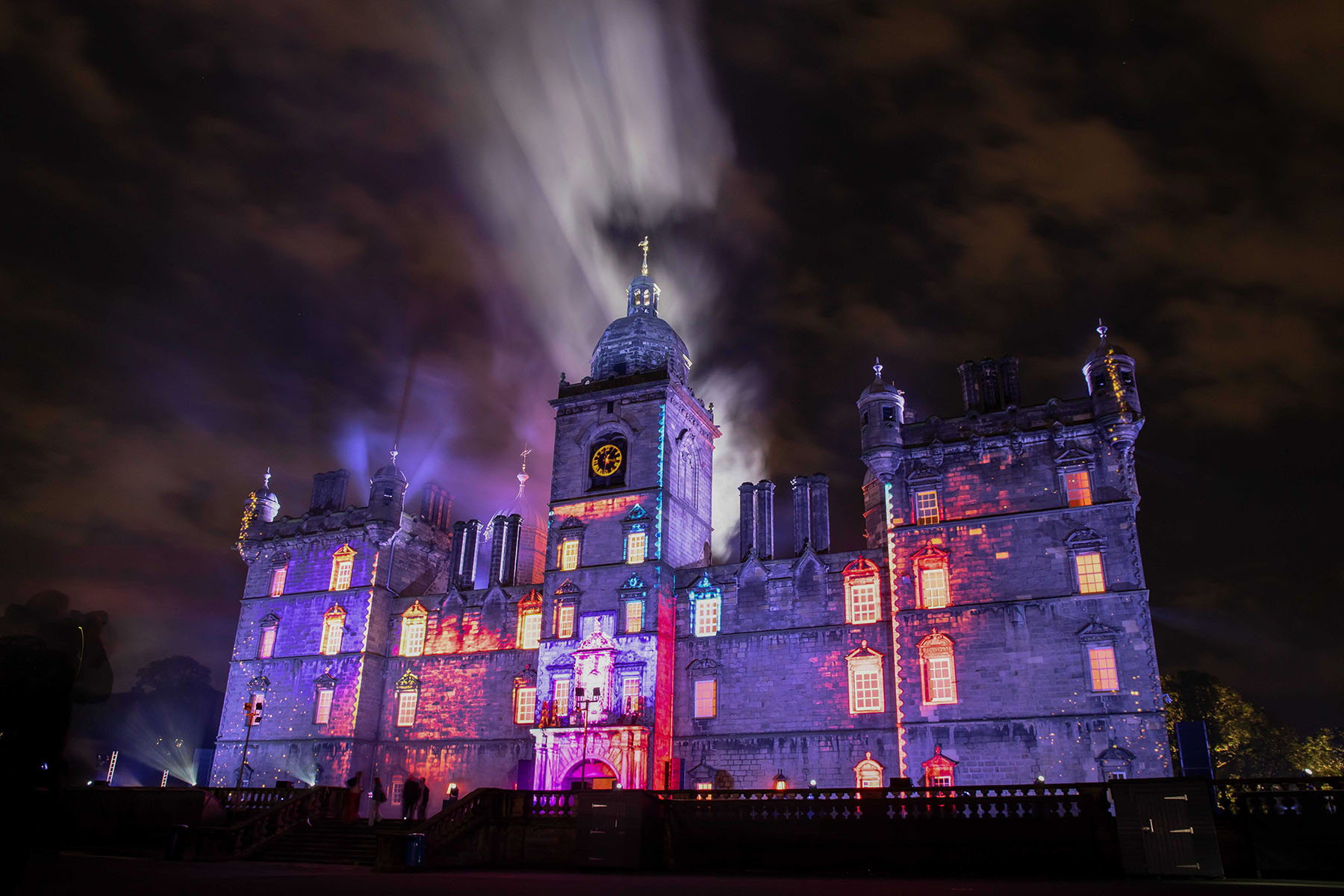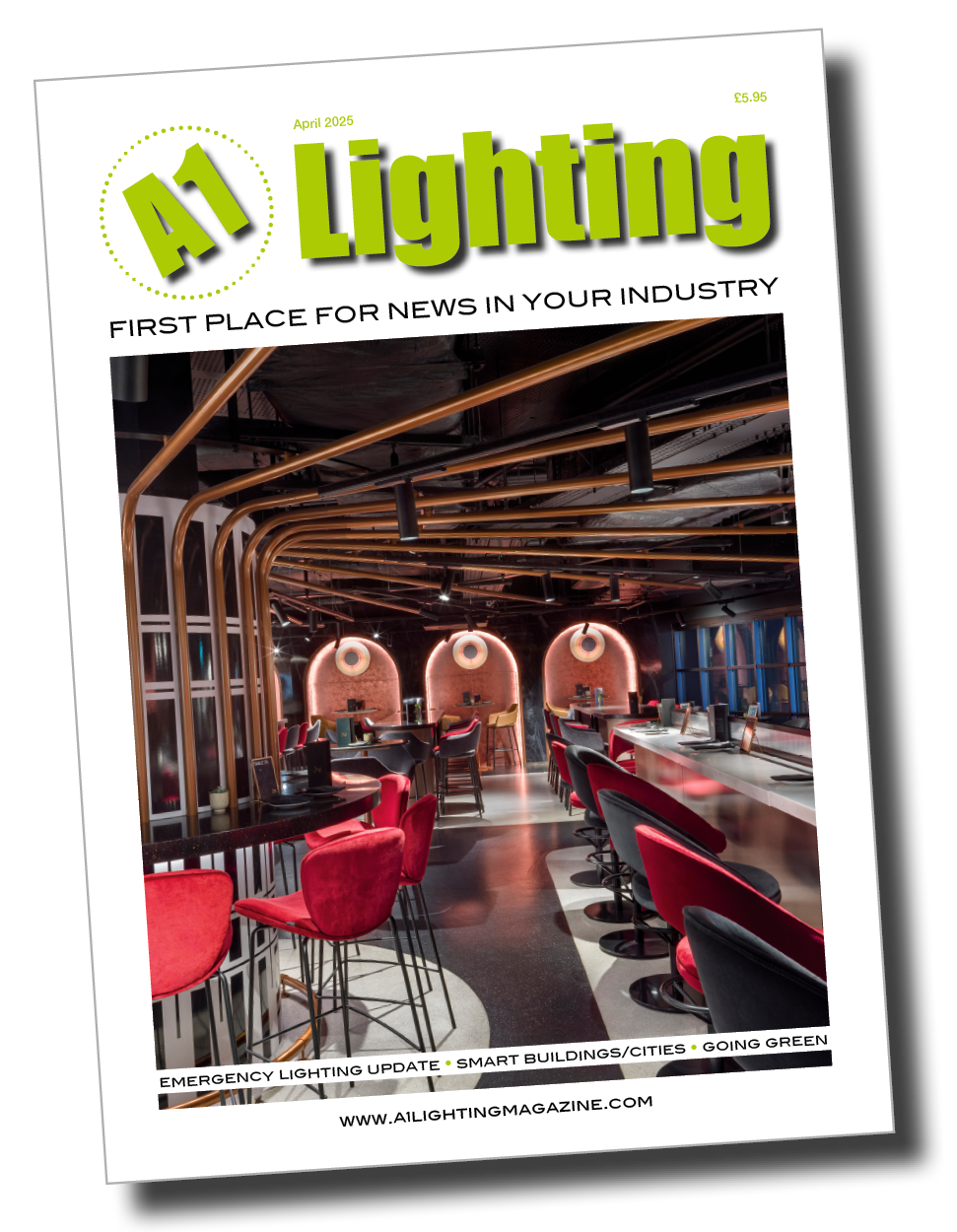
UK-based lighting designer Phil Supple utilised 56 Astera Tubes – 40 Titan and eight each Hyperion and Helios – to illuminate 137 windows across 57 rooms at the George Heriot School in Edinburgh, Scotland, for “Where to Begin”, the opening event of the 2024 Edinburgh International Festival (EIF).
This Edinburgh International Festival production was created by Pinwheel and delivered in partnership with The Macallan, for which Phil worked closely with creative agency Pinwheel under the artistic direction of Katy Fuller and co-director Simon Sharkey, together with composer Roma Yagnik and video artists, Yeast Culture.
“Where to Begin” celebrated the energy, vibrance and spirit of Edinburgh, Scotland’s heritage and mythology as well as the alchemy of invention, carefully blended in with a festival atmosphere evoking emotion, inspiration and imagination.
The event included an hour-long immersive pre-show experience based on ‘Rituals that Unite Us’ – with fire performers and other live artists to get the audience in the mood. For these two pre-show areas, 16 x Astera AX3s were among other lights deployed for subtle illuminations, proving a perfect tool with their IP rating for outdoor use, battery power and operation via CRMX2 wireless DMX.
After this, people walked around to the back of the building and gathered to enjoy the spectacular projection/son et lumiere finale, with video content mapped and projected onto the school’s magnificent north facade by Graymatter Video.
The ‘out-of-the-box’ idea of illuminating all possible windows from inside the building … was to bring an additional layer of magic, depth and three dimensionality to the event. Not just to the finale show where it made a big impact, but also lighting the side windows and therefore the backdrops to the two pre-show areas really energised the building.
Phil has utilised various Astera products for different projects and, once he and the team had established this as a viable plan, he knew how Astera Tubes would be perfect to evoke the exact effect everyone wanted.
Dating to 1620, the turreted George Heriot’s School building was designed by architect William Wallace and is built from sandstone with unique decoration above each window, and the north facade features a striking central clock tower. It is A-listed Scottish heritage protected.
All of which meant that any production related work happening there had to be executed with extra care.
“We needed bright and efficient fixtures with good colour mixing that were lightweight, portable and practical to rig and place in the different rooms without disturbing what was already in there as it’s a fully functioning school,” stated Phil, adding that they needed to be controlled wirelessly and produce no heat.
The Astera Tubes were supplied by locally based lighting rental specialist, Black Light, together with the event’s other lighting equipment.
Phil and his team – including programmer Lawrence Stromski, production LX Andy Murrell and Black Light’s lighting crew of Tom Pritchard, James Froment and Jon Meggat, together with Yuetong Heather An and Olivia Charneux – carefully positioned the Astera Tubes in the assorted rooms, a meticulous process that took two days.
These were a mix of classrooms, staff rooms, common rooms, canteens, storage areas, etc., and in general the Tubes were positioned optimally for producing a beautiful soft glow of luminance that would radiate out through the windows and look perfect from the outside.
Sometimes they were rigged on bookshelves, desks, on chairs or tables set up in the middle of the room or on the floor.
Helios were also used in former gas lanterns on the exterior of the building to add a warm lantern-like glow. The total pixel count was 890.
“One of the beauties of these Astera fixtures is that they can be rigged anywhere,” Phil enthused, underlining that as they were being left unattended, low heat emission was an essential requirement. They could also be used easily in all the spaces with no impact in this protected environment.
Some of the larger rooms would have two Hyperion Tubes set up to throw light out of 6 or 8 windows, while some of the smaller spaces would be illuminated with a single Helios tube.
All the fixtures were powered locally via single power supplies plugged into 13-amp sockets, with data running via a Lumen Radio network.
All the Astera products on the show were run in multi-pixel CRMX2-mode, using four Lumen Radio Aurora transmitters, one for each façade of the building.
The complete Astera setup comprised four DMX universes out of 10 in total on the show, with the 400 timecoded lighting cues programmed on a grandMA2 console and combined with video and sound production cues during playback which was from the QLab audio track controller.
Lighting programmer Lawrence Stromski stated, “The high-quality Astera colour engine common to all Astera range products makes programming with these tools a breeze.
“Fixtures are easily interchangeable for any other type which quickly facilitates any required on-site design or technical changes. The dimming curve and the settings of the Astera fixtures are some of the best refined of any product I have seen, so with minimal set up time needed, time can be optimised for creating and finessing the look and style of the show.”
Having the windows lit like this made a huge difference to the overall visual picture experience by the audiences.
Initially, it was a major undertaking persuading the school’s building and operation managers to engage with the idea, and then getting access to all the rooms. Once the plan was implemented and everyone could see the results, “all were delighted and could see how it was worth the considerable extra effort” concluded Phil.
“Phil’s lighting design for the whole production was beautifully crafted and created to work sympathetically with other effects like fire and projection that were used across the site
The interior lighting of the windows added a brilliant new dimension as we needed the building to feel like it was alive and another character in the story with latent energy that built gradually to the climax of the show. There was a truly magical moment when the lighting in the windows followed the voiceover precisely, so it really felt like the whole building had been occupied by our main character and was directly addressing the crowd! I was thrilled with just how brilliantly this helped carry our story.”
Also instrumental to the success of “Where to Begin”, which played over three evenings attracting 3,000 people each night, were producer Holly Goodfellow, head of operations Dan Adams, technical production manager Al Pickard, and project coordinator Ellen Fernley.
Photo credit: Jess Shurte













